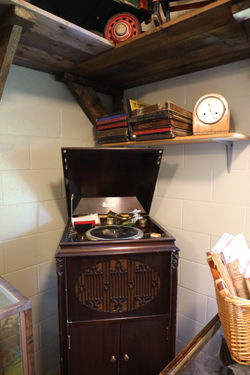top of page
Kootenai Brown
Pioneer Village
Howdy! We are happy you're here.
We are open Tuesday to Saturday from 10am - 5pm. Please note that our last admission time is 3pm.
We are closed on Sundays and Mondays. *Please call ahead in the winter months to ensure The Village portion of our museum is open. We do not open The Village if there is ice or heavy snow on the walkways.
Clothing “Ladies’ Suitings” in green, grey and brown, of heavy tweed, usually sold for seventy-five cents per yard. One autumn’s sale price was forty cents. Ladies’ fall and winter overcoats, of tweed and other fabrics, usually sold for eight to twenty dollars each but were on sale at a third off the usual price. Raincoats for the fairer gender were on sale for up to thirteen dollars apiece. Ladies’ dresses featuring Serges, Prnamas and heavy Corduroys were available for up to ten dollars. Beautiful dresses are on display in the Millinery within the Beere Exhibition Hall.
bottom of page















































































